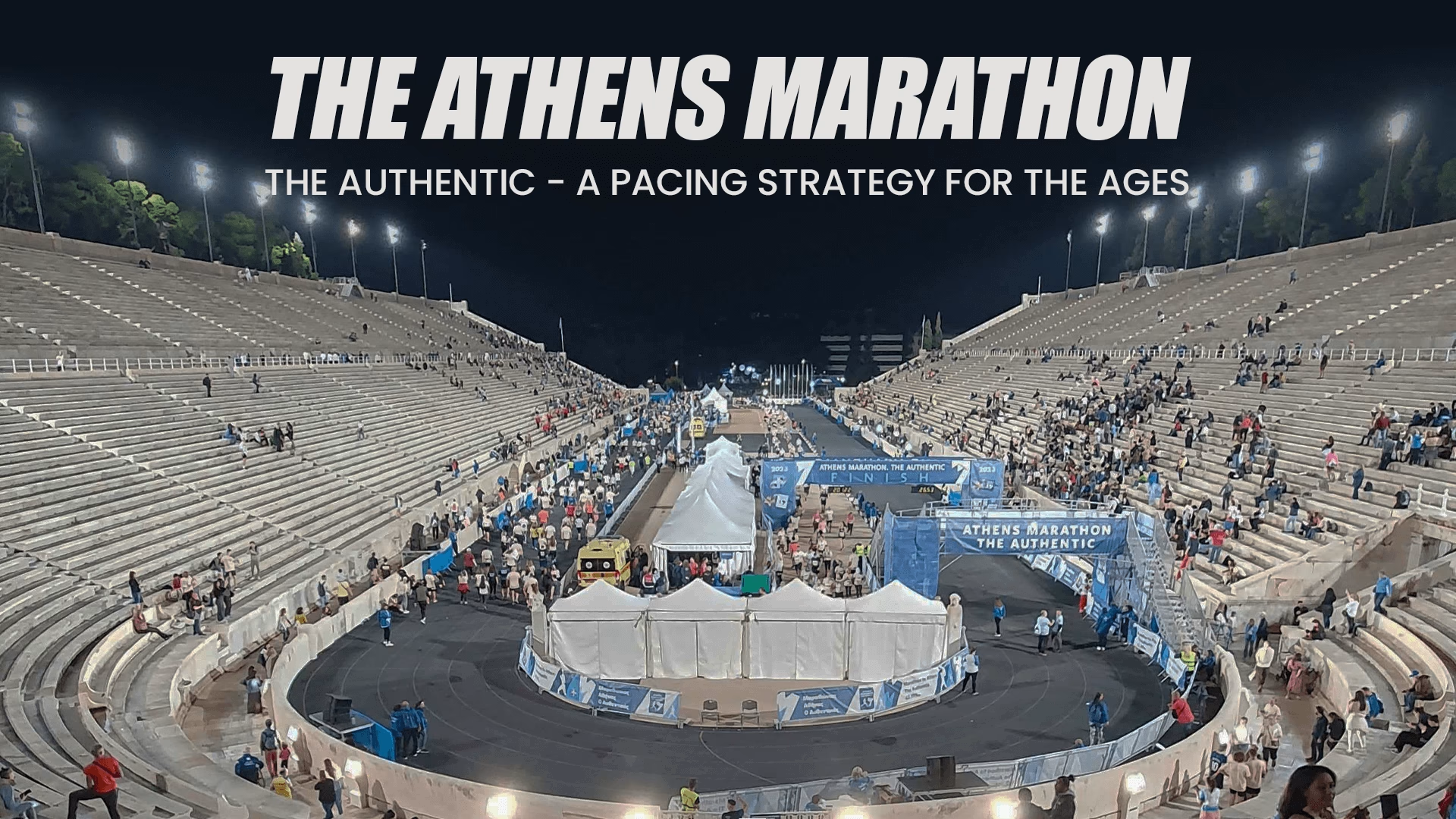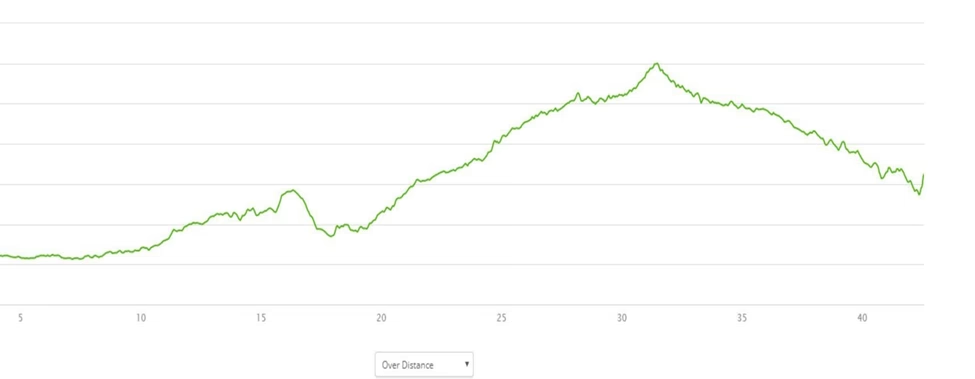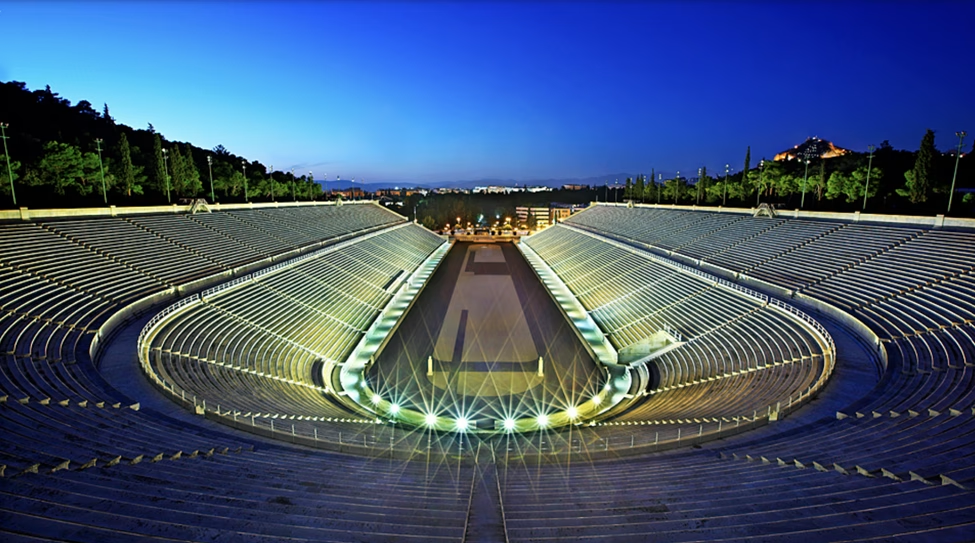The Athens Marathon. The Authentic – A Pacing Strategy for the Ages

It’s usually hot. It’s typically humid. It’s undoubtedly hilly.
It’s the marathon course that preserved democracy over 2500 years ago and hosted Olympians in 2004. It is the inspiration for hundreds of other marathons worldwide and it is the basis for the lure that millions of marathon runners worldwide challenge themselves with annually. It is the Athens Marathon. The Authentic.
As a veteran of this historic race, I can tell you the Athens marathon is known for its challenges including the 13-kilometer-long ascent and the characteristically unfavorable weather conditions (granted 2024 was a great exception with cool temperatures and a strong tailwind from start to finish). It is not a course people expect to run a personal best on – unless, of course, it is the only course you ever plan on running.
But what truly defines this race is not only its history, but how you approach it. With an appropriate pacing strategy and targeting a negative split approach, you will be able to enter the famous Panathenaic Stadium, also known as the Kallimarmaro, and cross the finish line with a smile across your face, echoing the words of Pheidippidis, the “original” marathon runner, “Nenikkikamen – We are victorious!”
The course in review
In reviewing the elevation map of the course, it is best to break the course down into three sections and adjust your pacing strategy accordingly: the start to 18 km, 18 km to 31 km, and 31 km to the finish line.

In brief, the first 18km provides a bit of variety starting with a gradual downhill until 5km, a bit of gently rolling hills until 16km and then a steep decline from 16-18km. From 18km to 31km you are essentially climbing – nonstop. And from 31 km to the finish, you can expect a near continuous descent into the center of Athens. So, the general idea is to get to that 31km in good shape, so you can take advantage of the downhill and cruise into the finish. Now let’s dive in on how to tackle each section to make that a reality.
Start to 18 km: Patience gets you there faster
As in all marathons, the first kilometers can seduce you. The crowd energy is contagious, your legs feel fresh, and the temptation to bank time is real. The rested feeling any runner has after a successful taper tends to make you feel unstoppable in the early stages. However, these first 18 kilometers are the most important part of the race that will set the tone for how things unfold for you later.
This is the part of the race where restraint pays dividends. Think back to those early morning threshold runs or the nights you traded social plans for sleep. That same discipline belongs here. The effort should feel controlled, almost casual, as though you’re holding yourself back on purpose. If you’re questioning whether you’re going too easy, you’re probably exactly where you need to be.
It takes discipline to hold oneself back while being passed by everyone else. It takes discipline to stick to a negative split racing plan when you feel so strong and fresh after just 5 kilometers. If it doesn’t feel slow, you are going too fast. As Eliud Kipchoge says, “Patience gets you there faster.” In Athens, patience ensures you arrive at 31 kilometers ready to race.
18 km to 31 km: Respect the climb
The next section is essentially all uphill. It’s about 23 km straight, with a couple of particularly steep sections. Here the key is to go based on feel or RPE (rate of perceived exertion) – not pace. You can expect this to be anywhere from 5-15 seconds per kilometer slower than the average pace of your entire marathon!
Running based on RPE is important to keep in mind for this part. If you choose to push on the hills to maintain the pace you were targeting, the energy cost of that effort is like swiping your marathon energy credit card at an exorbitant rate—you will pay it back with interest later. Your job is to reach 31 km with reserves still intact, not debts to settle. Cover your watch and run by feel. Trust your body, not the numbers, until the crest of the final hill.
31 km to the Finish Line: Time to bring it home
Congratulations, you’ve made it to the top of the hill and now you can enjoy the last bit of this marathon, knowing that the most difficult parts are behind you. At the crest, the road bends downward and Athens finally offers you a gift. The descent invites speed, but don’t flip the switch all at once. Allow the pace to come naturally, settling into a rhythm where gravity is your ally, not your undoing. Avoid overstriding; think light feet under your hips, and let your momentum build gradually.
Let the crowd carry you forward, but keep your focus. If the weather has been kind and you’ve managed your effort, the final five kilometers are yours to own. And in the last kilometer, let go. Turn toward the Panathenaic Stadium, feel its marble walls rise around you, and enter with intention. It is a finish line unlike any other.
If you keep your patience and discipline in the beginning and listen to your body on the hills, you will no doubt have unexpected strength and energy to finish strong. This is where the negative split pays off, leaving your mark in the Panathenaic Stadium as champions have been doing since 330 B.C.

This approach to running the Athens Marathon has been tried and tested by all the members of our Athens-based running club, “Marathon Club,” We are a varied bunch of amateur athletes of all levels. But even the elites have benefited from this approach. In 2023, Edwin Kiprop Kiptoo ran 2:10:34, setting the course record in what were historically challenging weather conditions for the event. Kiptoo accomplished this feat by staying focused on a gradual build working with his pacers, running the first half in 1:05:53. He ran the last 10 kilometers alone, with an impressive negative-split of 1:04:41 for the second half to break the previous record of 2:10:37. I know this from first hand experience as I was the presenter at the Elite Technical Meeting before the race and shared this same tactical plan with the group.
As a coach, seeing an athlete of that caliber trust the strategy of ‘patience first’ on this course is the ultimate validation. It’s easy to dismiss a conservative start, but Kiptoo’s performance proves the science behind respecting the hills of Athens. It’s not just about energy conservation; it’s about having the physical and mental reserves to truly attack the final downhill and enter the stadium strong, not simply survive the final kilometers. If this strategy works for a world-class marathoner on a record-setting day, it is absolutely the blueprint for your own successful finish.
The Athens Marathon is more than a race; it is a pilgrimage back to the birthplace of the legend. You’ve earned the right to be there: the discipline, the training, and the commitment to your goal is the true victory that began long before the starting gun. Now, it’s time to be rewarded for that dedication. You’ve respected the hills, held your nerve through the heat, and saved the best of your effort for the final, triumphant descent into the city. When you finally round the corner and see the blinding white marble of the Panathenaic Stadium—the same ground where the first modern Olympic champions finished—you won’t just be a runner, you will be a part of history. Because in Athens, every finisher is not just completing a marathon — they are continuing a story that began over 2,500 years ago.
Practical Bits
- The race is typically held on the second weekend in November each year.
- Marathon start time is 9:00.
- There are distance markings at every kilometer along the course.
- Bottled water stations are provided every 2.5 km, while there are other feed stations providing isotonic drinks, bananas, gels, etc.
- It is a point-to-point race; you lneed to drop-off your post-race clothing bag at the expo in the days before the race to retrieve your items after the end of the race.
- Transportation is provided by the race organizers to get to the start.
- There are also 5km and 10km distances available on race weekend.
- The marathon draws roughly 20,000 participants.
For more information, visit www.athensauthenticmarathon.com.